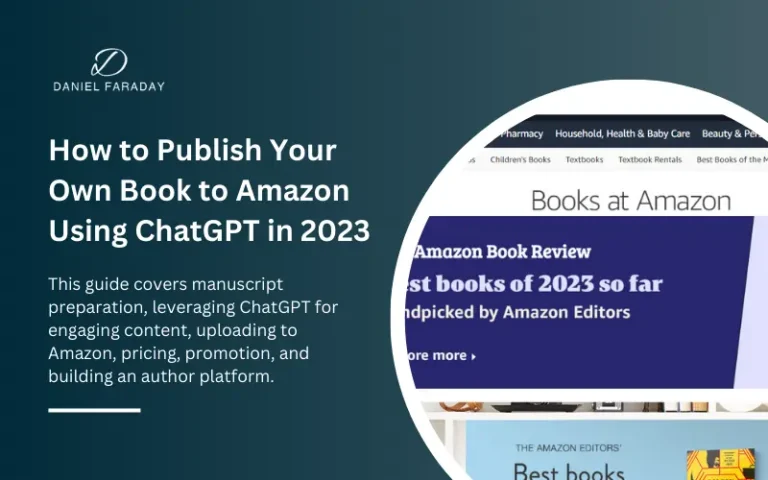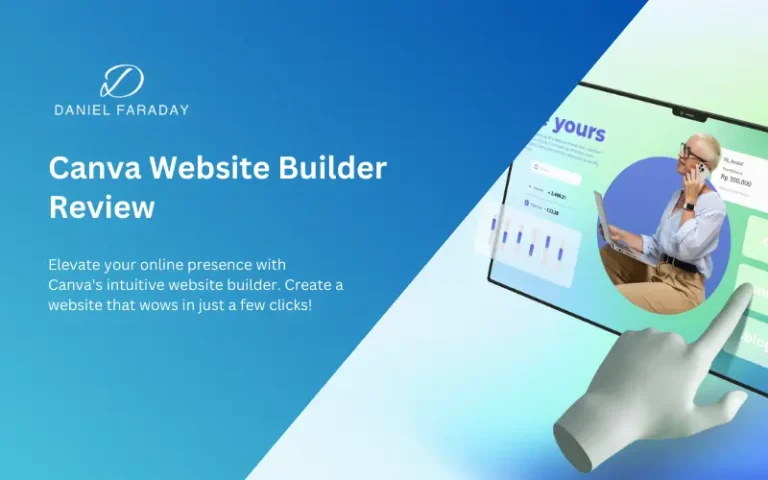How to Use AI to Place Guest Posts Effortlessly

Ever wanted to get published on other sites to build your authority and reach new readers, but don’t have the time to research and pitch guest posts? You’re not alone. Writing and pitching guest posts is time-consuming. But what if AI could do a lot of the heavy lifting for you? Now it can. New AI tools are making it easier than ever to get published as a guest author. No more spending hours researching publications and pitching editors only to get rejected. With AI, you can generate hundreds of personalized pitches in minutes and land more guest post placements than ever before. In this article, we’ll show you how to use AI to place guest posts on autopilot so you can focus on what really matters – creating great content. The days of tedious guest post pitching are over. The future is now – and it’s powered by AI.
What Are Guest Posts and Why Are They Useful?
Guest posting is when you write an article to be published on someone else’s blog or website. It’s a great way to increase traffic to your own site and build your authority as an expert in your industry. Actually, it is a win-win situation.
Why Guest Post?
There are several benefits to guest posting:
1. Gain new readers. The audience of the site you’re guest posting on will be exposed to your content and expertise. Many will likely check out your own site and social media profiles.
2. Build backlinks. The post you write will contain links back to your site, which helps with search engine optimization (SEO) and ranking higher in Google.
3. Increase credibility. Being featured as a guest poster establishes you as an authority in your niche. Readers will see you as a trusted expert source.
4. Promote your content. At the end of your guest post, you can invite readers to subscribe to your email list or check out your products and services. Just be sure to do so in a helpful, unpushy way.
5. Forge new partnerships. Connecting with other industry influencers through guest posting can lead to collaborations, cross-promotions, and other joint venture opportunities.
The key is finding sites that reach your target audience and accepting only high-quality guest post opportunities that are a good match. Do some research on the site to make sure their audience would benefit from your content and expertise. When you submit a post, be professional, follow all guidelines, and provide useful, engaging content.
Guest posting done right is a win-win. The host site receives a great article, you gain exposure, and readers benefit from your knowledge. With the power of AI to help research opportunities and generate content ideas, placing strategic guest posts has never been easier. The rewards of building new relationships and expanding your audience make the effort well worth it.
Crafting Compelling Content With AI Assistance
AI tools can help take the grunt work out of creating compelling guest posts. By generating draft content, suggesting relevant topics, and optimizing your posts, AI allows you to focus on the creative parts of the process.
Popular AI Writing Tools
First things first, before we dive into the creation, let’s talk about some of the popular AI tools that are making waves in the world of content creation. These nifty tools can help you at various stages of your writing process, making them valuable assets for both beginners and experienced writers.
Your Creative Muse

Hypotenuse AI
Hypotenuse AI can instantly transform a set of keywords into comprehensive articles and marketing content.
Your Grammar Guru

Grammarly
Grammarly is your go-to AI tool for polishing your writing. It not only checks your spelling and grammar.
Your SEO Sidekick

SurferSEO
SurferSEO is your secret weapon for SEO optimization. It analyzes top-ranking pages for your target keywords.
Now let’s talk about creations. I like to explain it using 5 steps. I think it is easy to understand everyone.
Step 1 – Finding Inspiration
Coming up with fresh new post ideas day after day can be draining. AI tools like hypotenuse.ai and ChatGPT can suggest relevant topics by analyzing trending keywords, questions people are asking, and gaps in content. Just provide some details about your expertise and target audience, and the AI will propose a list of timely post topics to choose from.
Step 2 – Creating an Outline
Once you have a topic, use the AI to help outline the post. You can use Hypotenuse AI, ChatGPT, or SurferAI Outline Generator to create an outline. Describe the key points you want to cover, and it will organize them into a logical flow complete with an introduction, body paragraphs that transition smoothly between ideas, and a conclusion that ties it all together. Tweak the outline as needed to match your personal style and the post’s purpose. The AI can even suggest additional points or reword ideas to improve clarity.
Step 3 – Drafting/Creating the Content
If you get stuck trying to turn your outline into full sentences and paragraphs, have the AI generate a first draft. Provide the outline and details about your target length, reading level, and tone. The AI will compose a draft in your own words that accomplishes your goals. You can then revise and personalize the content as little or as much as you want. This hybrid approach allows you to skip the blank page stare and jump straight to polishing and perfecting the post.
If you use tools like Hypotenuse AI, ChatGPT or Jasper AI you can even generate pretty good full content. (But it always needs a human touch)
Step 4 – Optimizing for Engagement
Use a content optimization tool like Grammarly to analyze your draft and suggest ways to improve its grammar and reader engagement. This will look for opportunities to include synonyms, related phrases, and semantically similar terms. It can point out sentences that could be reworded to be more concise or scannable. With the tool’s feedback in hand, make adjustments to your post to give it the best chance of reaching your audience.
Putting tools like this to work at each stage of the guest posting process will transform what used to feel like a tedious task into an efficient and enjoyable experience. More posts with less effort—that’s the beauty of using AI to boost your content creation.
Step 5 – Optimizing Your Guest Post for SEO
To optimize your guest post for search engines, focus on keyword placement and internal linking. If you can use tools like Surfer SEO, you don’t need to worry about it. This tool can handle all on-page SEO processes, even adding images. But if you are a beginner and like to do it with your hands while learning about SEO, I can promise the below data will help you mostly.
Keyword Placement
In guest posting keyword placement is a key point. (Most editors check your article before they publish it on their website, but I think it is your responsibility. Once you provide the perfect article, you can take more opportunities with good relationships)
For this explanation, let’s assume that our keyword is “guest post”. Think like this and pay attention to the following points.
- The title. Place it at the beginning for maximum effect.
- The first paragraph. Mention “guest post writing” in the opening paragraph.
- Subheadings. Use H2 and H3 subheadings that contain “guest post” or related terms like “content writing.”
- 2-3 times in the body. Include your target keyword a couple of times in the post content in a natural way. Don’t overdo it, or it may seem spammy to readers.
- Image file names and alt text. If you include images, name the files with keywords and optimize the alt text. For example, “guest-post-writing-strategy.jpg” and “alt=” An infographic showing a guest post writing strategy.”
- Internal links. Link to other relevant content on your site using keyword-rich anchor text. For example, “Check out our in-depth guide to launching a guest post marketing campaign.”
- Meta description. Include “guest post writing” in your post’s meta description, which is the short summary in search results.
Internal Linking
Internal linking passes “link juice” to other posts on your site, which signals to Google that your content is high quality and relevant. To maximize internal linking in your guest post:
- Link to 2-3 other posts on your site that relate to guest post marketing. Vary the anchor text for the best results.
- Place links naturally within the content, not just at the end of the post. Link when you mention a related topic, tool, or resource on your site.
- Check that all internal links are working properly before publishing your guest post. Broken links won’t help your SEO and will frustrate readers.
Following these tips will ensure your guest post is optimized for both readers and search engines. With high-quality, keyword-rich content and internal linking in place, your guest post can drive more organic traffic to your site from Google and other search engines.
Bonus Tips for Guest Posting
Finding the right blogs to pitch your guest posts to is key. You want sites that actually get traffic and engagement from your target audience.
Do a search for “[your topic] + write for us” or “[your topic] + guest post.” Make a list of blogs and sites that accept guest posts on your chosen subject. Look for ones with a large, engaged readership that will match your target audience.
When you making a relevant site list, consider the below points carefully:
- Rank on the first page of Google for those keywords. The higher the ranking, the better.
- Have a clean, professional design. If a blog looks spammy or outdated, searchers may perceive it as less authoritative.
- Post new content regularly. Stale, infrequently updated blogs won’t keep readers engaged or rank as well in search results. Aim for blogs to update at least once a week.
- Have a comments section with actual discussions. This shows the content and community are actively engaged.
- List the blog’s contributors and their credentials. Guest posts by industry experts or thought leaders are ideal. If the blog only lists a single author with little about their background, that’s a red flag.
Use a tool like Buzzsumo, Ahrefs, or SEMrush to search for sites in your niche that accept and regularly publish guest posts. Look for sites with a high domain authority and page authority that will actually drive referral traffic. Make a list of your top choices.
Contacting the blogs
Once you’ve built a solid list, reach out to the blog editors or owners and pitch your guest post idea. Explain why you’re an expert in the field and how your post would benefit their readers. Suggest a few possible headline options to give them an idea of the angle and content.
If you get the go-ahead, be sure to provide an outline and draft for approval before submitting the final post. Follow all of the blog’s guidelines for formatting, images, links, keywords, etc. When the post is live, announce it on your social media profiles to increase views and shares. Rinse and repeat with other blogs to keep gaining valuable backlinks and exposure!
With the right strategy, you can efficiently scale guest posting through AI and benefit from new readers and improved search rankings. The key is finding the perfect match between blogs and your expertise. Put in the work to research and pitch the right places, and you’ll build your authority as an influencer.
Research Site Preferences
Visit the sites on your list and look for details on their guest posting guidelines and requirements. (If they allow guest posting) See what topics and post types they accept, their preferred word count and style, and any other specifications they list. The more tailored your pitch and post are to their needs, the more likely they are to accept your submission.
Check their already published content.
Avoid pitching articles on topics they’ve already covered (you can do a site:website.com search on Google first to be sure). The only exception might be if what they have is an extremely outdated piece, in which case you can show you’ve done your homework by mentioning that.
Generate AI Email Pitches
Use a tool like ChatGPT or Jarvis to automatically generate unique email pitches to the site owners on your list. Provide details about the type of post you want to contribute and how it will benefit their readers. Be genuine and personable (You can use an email template, but don’t send the same email for everyone), mentioning something specific you appreciate about their site. Close by asking if they’d be open to reviewing your guest post.
Write AI Guest Posts
When you get the green light to submit a post, use AI writing tools to draft it quickly. Tools like Copysmith, Jarvis, and Article Rewriter will analyze posts already on the site to determine the preferred style, tone, and topics. Then you can use the tools we mention above to generate an original draft in that specific style for you to review and customize as needed before submitting it to the site owner.
Submit and Follow Up Professionally
When your post is ready, submit it to the editor for review along with a suggested headline or title. Be sure to also include an author bio, any images you’d like to have included, and a link back to your website or service. Then follow up within a week to see if they need any other information from you or have an estimated timeline for if/when they will publish your post.
Using AI to research opportunities and tailor your guest posts for each site allows you to work smarter, not harder. With some upfront work finding the right blogs and crafting a draft, you can then easily adapt your content to different places and increase the chances of getting published and discovered by new readers. The key is being professional, providing value, and making the process as simple as possible for editors and site owners to work with you.
Build Lasting Relationships
Don’t treat site owners as a means to an end. Build real relationships with them by engaging with their site and social media, sharing their content, and commenting on their posts. When you submit a quality guest post that receives positive reader feedback, reach out to thank them again for the opportunity. Nurturing relationships with site owners will lead to more guest posting invites and collaborations down the road.
Following these steps will allow you to secure more high-quality guest posting opportunities in less time using the power of AI. With the right tools and strategies, you’ll have an army of AI assistants ready to research sites, generate pitches, write posts, and help build relationships so you can focus on the bigger picture of your content marketing goals.
Promoting Your Guest Post for Maximum Exposure
Once your guest post is published, it’s time to start promoting it to drive traffic and boost your visibility. Here are some tips to maximize the exposure of your guest post:
Share on Social Media
Post the link to your guest post on all your social media profiles – Facebook, Twitter, LinkedIn, etc. Mention the publication and encourage your followers to check it out. Ask your friends and connections to share it too. The more shares and likes, the higher it will rank in social media and search engine results.
- Tweet something like: “Check out my latest guest post on @PublicationName: (Post Title). (Link)
- On Facebook, say: “My guest post “(Post Title)” was just published on (Publication Name)! Give it a read and let me know what you think. (Link)”
- Share on LinkedIn by posting: “Excited to have a new guest post published on (Publication Name): (Post Title). Check it out and I’d appreciate any feedback or comments! (Link)”
Email Your Contacts
Send an email to your newsletter subscribers, colleagues, and coworkers with a link to the guest post. Mention that you have a new article published and would value their input or support. Ask them to share it on their social media as well to extend your reach.
Comment on Relevant Posts
Search for recent posts on the publication’s site or other industry blogs on similar topics. Comment on these posts and mention your guest article, providing the link. For example, you could say something like: “Great post! I recently wrote about this topic as well in my guest post on (Publication Name). (Link)” This exposes your content to engaged readers who are likely interested in the subject.
Contact Influencers
Reach out to influencers in your industry who have a sizable social following. Send them an email with details about your guest post and ask if they would be willing to share it with their audience. Be polite and explain how their support would help increase traffic and visibility. The worst they can say is no, but many influencers are happy to give new or less-established writers a boost.
Promoting your guest post is key to maximizing its impact and driving more high-quality traffic to your own site or blog. With some time and consistent effort reaching out on social media, via email, and to influencers, you can gain substantial exposure from a single guest article. Keep at it and don’t get discouraged – sometimes it takes repeated attempts for people to engage, so persist and you’ll start seeing results!
Measuring the Success of Your Guest Posting
Once your guest posts have been published, it’s time to see how they’re performing. Measuring the success of your guest posting efforts is key to improving your strategy and getting the most out of this tactic.
Check for social shares. See how many times your guest post has been shared on social media platforms like Facebook, Twitter, and LinkedIn. More shares indicate the content resonated with readers and is being spread to new potential readers.
Monitor comments. Read through the comments on your guest post. Look for feedback, and questions, and engage with commenters. Address any concerns or critiques, and say thanks for the compliments. Comments show readers are engaged and invested in the content.
Track links and mentions. Use a tool like Google Alerts or Buzzsumo to track links, mentions, and references to your guest post. Other websites and media linking to or mentioning your content expand its reach and authority.
Watch the traffic. See if traffic to your own website or blog has increased as a result of the guest post. There should be a bump in new visitors from the host site. Check your Google Analytics or other traffic metrics to view sources of referrals and new user flow.
Review rankings. For the keywords and topics covered in your guest post, have your rankings in search engines like Google improved? Guest posting is a way to build high-quality backlinks and authority, which search engines reward with better rankings. It can take a few weeks to see noticeable changes, so re-check periodically.
The success and impact of guest posting are measurable through social shares, comments, links, traffic, and rankings. While one post may only drive modest results, a strategy of ongoing guest posting over the long term can significantly increase your visibility and authority. Keep refining and improving your efforts based on the metrics and data gathered from each post.
Guest Posting FAQs: Answering Common AI Questions
Guest posting with AI tools can make the process so much easier, but you probably still have some questions. Here are answers to some of the most common FAQs about using AI for guest posting:
Do I still need to write the posts myself?
Yes, you should still write the posts yourself. AI tools are meant to assist you, not replace you. They can help suggest topics, find sites that accept guest posts in your niche, and even provide outlines or first drafts, but you need to review and customize the content to fit your brand and expertise. AI is getting smarter, but human writers and editors are still essential.
How do I know which sites accept guest posts?
AI tools can scour the internet to find websites in your industry that accept high-quality guest posts. They look for phrases like “write for us” or “submit a post” on the site to determine if they welcome guest contributors. The AI provides lists of potential sites so you can review them and choose places where your content and expertise would be a good fit.
What topics should I focus on?
AI can analyze popular and trending topics in your niche to provide suggestions, but you know your business and customers best. Focus on topics you have expertise in and that would interest your target audience. Think of questions your readers frequently have or new trends they would want to know about.
How much should I pay for an AI guest posting service?
Pricing for AI guest posting services can range from around $50 to $500 per month or more, depending on the features. Basic services that provide topic and site suggestions tend to start around $50 to $200 per month. More robust services that offer content creation and outreach assistance can be $200 to $500 per month. Some providers charge based on the number of posts published. Compare a few options to find a service that fits your needs and budget.
Will guest posting really help my search rankings?
Yes, guest posting on high-authority websites in your industry can boost your search rankings. When you publish posts on other sites, you get a backlink to your own site. Search engines like Google use backlinks to determine how authoritative and trustworthy your site is. The more high-quality backlinks you have, the higher you can rank in search results. Guest blogging also increases your brand visibility and can drive referral traffic to your site.
Conclusion
So there you have it, With AI tools for content creation and optimization, you now have everything you need to place guest posts with minimal effort. Don’t spend hours slaving over your keyboard trying to craft the perfect post. Let AI do the heavy lifting for you by generating a draft, then spend your time reviewing and tweaking it to suit your needs. Use AI to research publications, identify guest posting opportunities, and get feedback on your drafts before pitching. With AI on your side, you’ll be pitching and placing guest posts in no time. Now get out there and start building your online authority and audience through the power of AI-optimized guest blogging. The opportunities are endless!






